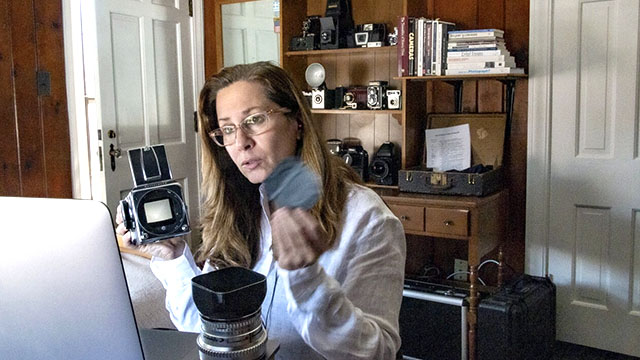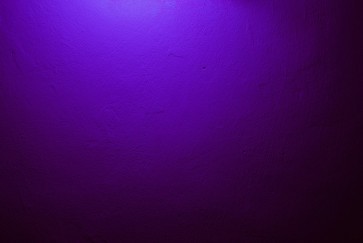- This is the first in a series of stories about the unique and creative ways Northwestern faculty are teaching remotely in the era of COVID-19.
Before the pandemic, Northwestern offered no courses on popular virtual platform Zoom. Now with Spring Quarter up and running, the University is averaging 4,000 Zoom courses and meetings a day — with community members collectively logging approximately 2 million minutes daily.
Behind the numbers, faculty moved quickly to demonstrate innovative, resourceful ways to bring these courses to life at a social distance.
Faculty artists from the Bienen School of Music, School of Communication and Weinberg College of Arts and Sciences often use class time for hands on arts practice and final projects that culminate in exhibitions, concerts and performances.
Social distancing has required faculty to heighten their innovation and resolve to creatively adapt courses for remote learning.
Here is an up-close look at how some arts faculty are leveraging technology and revamping their courses to chart new frontiers in remote learning.
The classroom as a camera: ‘Photographs are memories’
Pamela Bannos, Weinberg College of Arts and Sciences
Weinberg College’s Art Theory and Practice and School of Professional Studies professor Pamela Bannos is teaching three photography courses this quarter, including two that typically require use of a darkroom for developing photos on campus.

An artist, author and photographer, Bannos has embraced the meta nature of teaching photography through a camera on a computer screen.
She is teaching remotely from her 90-year old mother’s home in the Western suburbs where her workspace in her brothers’ childhood bedroom has inspired a fresh approach to her photography classes. “There are many memories here. Photographs are memories,” she observed.
Because students also are working out of their own rooms, Bannos has used the occasion to teach introductory students about artists and photographers throughout history who have made work from within their homes, and used the light coming through a window, or the window itself as subject.
“I’ve been talking about how their photographs are documents of what occurs, specifically, during the quarter and will become a time capsule of those weeks,” Bannos said.
“They have an opportunity to create a lasting record of this uncertain time -- or to use the course as a way to momentarily escape from the all-consuming scenario we’re currently living within,” she added.
Bannos adapted her module on the history of photography to give students a chance to make their own camera obscura — turning their room into a camera — by papering the windows to darken the room and creating a hole for outside light to enter.
Students also will study color using Adobe Photoshop, which the company has made free to students during the pandemic.
For her advanced Camera Extended course, she has set up her laptop to demonstrate how to use and modify cameras into a primitive pinhole camera. (See photo of Bannos demonstrating how to convert a Hasselblad camera into a pinhole camera).
Under typical circumstances the class would meet for extended time in the darkroom. Since students don’t have access to the campus darkroom, they may try out a recipe for developer and fixer that includes coffee grounds, vitamin C powder and lemon juice to make they own prints at home--and share the prints with the class by making a slideshow with photos of them taken on their smartphones.
Bannos says the online learning environment has driven many changes, but one thing hasn’t changed: “Now that the students have come into the home where I grew up, it’s making me acutely aware that I’m the vessel for their experience, not the location of the classroom.”
- Technology platforms: Zoom and Canvas
- Software: Adobe Photoshop, Google Drive and Slides
 Casting director Claire Simon (third from top left) visits Cindy Gold’s (upper left) Business of Acting class.
Casting director Claire Simon (third from top left) visits Cindy Gold’s (upper left) Business of Acting class.
Exploring subtext on screen: ‘Where are you now?’
Cindy Gold, School of Communication
Students in the three-year acting sequence are currently taking Cindy Gold’s Chekhov scene study course. The professional stage and screen actor believes that now is the perfect time for young actors to embrace the digital acting space.
“During the first week of class, students learned to frame and shoot an audition scene, with neutral background and good lighting, which is an essential skill for actors,” Gold said, adding that half of her own auditions this past year have been sent in audition tapes.
She teaches from home in Skokie and begins each class by asking “Where are you now?” Students respond with descriptions of both their physical location and mental state. “My acting students are loving, hard-working and disciplined. They’ve always enjoyed working together. But the class empathy has only deepened. The sense of how the group needs each other is even more pronounced.”
The focus of the class is subtext — what the character is thinking — which Gold describes as following the movie that is in the student’s mind within the scene. “In monologue work, an actor is required to ‘see’ someone in front of them,” she said. “Now my students are experimenting with looking straight into the camera to address the viewer, or looking off to the side, to address someone else in the room.”
Gold uses Zoom breakout rooms to rehearse students in small groups. “The camera is powerful, and we can see the eyes of the student actor very clearly. It is very potent,” she said, adding that she is considering using the camera for this course in the future.
Another advantage of the Zoom platform is that it allows students to add sound to scenes and add a shared background to their scenes.
“We have been able to think out of the box in ways we haven’t been able to before. It has really activated the class imagination,” said Gold.
Gold is also teaching the Business of Acting course this quarter. Visitors will include Northwestern acting alumni Harry Lennix and Kelly O’ Sullivan. Gold says there are actors, casting directors and agents from Chicago, Los Angeles and New York who all wanted to come and speak to the class. “There has not been a person I’ve approached who hasn’t said yes,” she said.
- Technology platform: Zoom and Canvas
- Software: Google docs
Tackling chamber music’s ‘naughty bits’
Desirée Ruhstrat, Bienen School of Music
Chamber music students will get to advance their proficiency with infamous solo passages under the Spring Quarter teaching model developed by Bienen School’s String Chamber Program Coordinator Desirée Ruhstrat, a violinist and member of the acclaimed Lincoln Trio and Black Oak Ensemble.

While spring cleaning at home in Highland Park, Ruhstrat and her husband, a cellist from Great Britain, came across his copy of “Naughty Bits,” a book series highlighting quartet excerpts for various string instruments. The British lesson book inspired Ruhstrat’s instruction plan for spring.
“For many works in classical Chamber Music, instruments can be thrust into the limelight with a solo passage that suddenly runs very high or with a very fast flurry of notes. The object is to collect together such passages so they can be practiced, making it easier when you are called upon to play these pieces,” Ruhstrat said.
Sixty-three Bienen students will receive weekly coaching from Bienen faculty including Ruhstrat (violin), Sylvia Wang and José Mendez (piano), Lynn Williams (harp), Andrew Raciti (bass) and members of The Dover Quartet, Bienen’s Quartet in Residence.
For their finals, students will submit a recording of an entire quartet or a list of the excerpts from the chamber repertoire.
Ruhstrat believes the lessons will give students an opportunity to focus on the individual roles and responsibilities of their specific instrument within the chamber repertoire.
“Focusing on the challenging passages will help them understand why composers chose certain markings, such as slurs and articulation and other musical details within the piece,” Ruhstrat said. “And how their technical choices as musicians can impair or enhance the overall group’s musical performance.”
While the perfect software is yet to be invented to solve the problem of sound quality and time lag for ensemble performance, Ruhstrat said that a test group of students in the class is experimenting with different methods of putting together an online trio performance. And she notes that a virtual Bienen Feinberg Orchestra Collaboration is underway on a Facebook page featuring students from both schools.
- Technology platforms: Zoom and Canvas
- Social media: YouTube, Facebook Live


